Ever heard of a Piebald Dachshund? It’s like someone gave a regular Dachshund a paintbrush and said, “Go wild!” To be honest, a piebald Doxie might look quite exotic at first glance. That’s why we decided to reveal all the facts you need to know about these pooches.
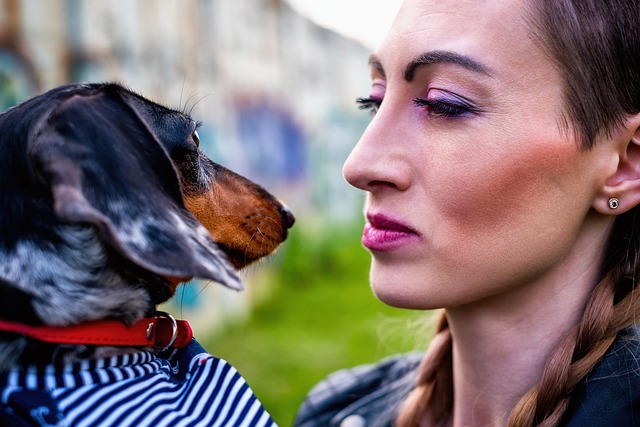
What is a Piebald Dachshund?
The Piebald Dachshund is an appealing breed that exhibits larger, irregular white patches against a dark background color. A unique genetic mutation gives a Piebald Dachshund a distinctive coloring that makes it stand out within the dog world.
Piebald Dachshunds: Origins And History
The origin of the Dachshund breed including the piebald variant goes back to Germany where it was bred solely for hunting. These dogs have over the years transformed from fierce hunters to loved pets but still hold on to the spirited and bold traits.
How Was the Piebald Dachshund Made?
Piebald Dachshund is neither an invention of a mad scientist but rather a work of art by genetic engineering. They have a particular gene that produces a certain pattern in their coats. we may refer to this gene as the ‘artist gene’. The piebald gene does its job by spraying up white patches on top of black coat thus giving them this fashionable style.
Dachshunds originated from Germany where they were bred for hunting purposes. Their bodies are long and low to the ground which makes them good at burrowing into dens where they can fight badgers. At first, authentic Dachshunds bore solid or double-colored coats, but when the breeders started to play with color combinations then an incredible phenomenon occurred.
The Role of Selective Breeding
Like an artist picking paint colors, breeders have selectively bred Dachshunds to bring out different traits like coat colors and patterns. When two Dachshunds carrying the recessive Piebald gene were bred, voilà! Piebald puppies entered the scene.
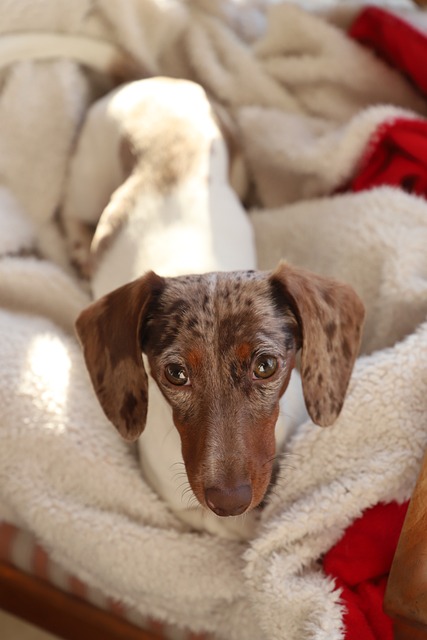
The Science Behind the Art
According to the genic aspect, Piebald Dachshund pattern is a partial leucism which includes partial loss of pigmentation. As a result, these cute uneven white patches emerge against the base color. It’s a natural version of tie -dye!
Not Just a Pretty Coat
But the Piebald Dachshund isn’t just a pretty face. The breed retains the classic Dachshund traits: zest, liveliness, intelligence and dash of stubbornness. Just like human fingerprints, each has a quirky pattern, and the patterns are just as good at identifying the dogs.
Physical Characteristics of a Piebald Dachshund
Coat and Color Patterns
Piebald Dachshunds are beautiful dogs with coats that look like a mosaick of white and black spots. This is not only a colour variation, but also a particular coat pattern among the breed.
Size and Body Structure
These pooches may be small but they are well-built and athletic. They are characterized by a long Dachshund type of body and short legs which allow them to move in small places while on their hunts.
Temperament and Personality of a Piebald Dachshund
Common Behavioral Traits
Piebald Wieners are witty and full of fun. At the same time, they are smart, inquisitive, and can be quite stubborn. Due to this feature, you need to act wisely and teach your furry friend who’s the pack leader from the start. And, when it comes to training, make sure you use a positive reinforcement. Doxies don’t like punishment so yelling and making them feel afraid will only cause the opposite effect.
On the other hand, this dog breed can be extremely friendly to their family members as they exhibit a mixture of bravery and loyalty.
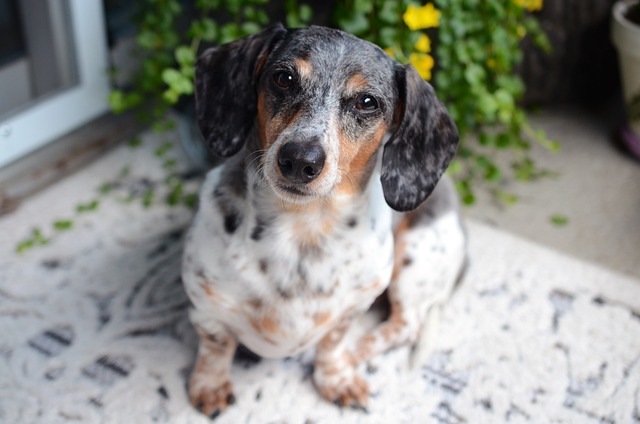
Compatibility with other pets, including families
These dogs are usually good house dogs and can form tight bond with the family members. Wiener dogs are especially friendly and gentle toward kids. They can make a wonderful friendship if properly trained from an early age.
Nonetheless, their hunt instincts might sometimes result into a chase. Therefore, they should be watched around smaller animals and pets.
Health and Care of a Piebald Dachshund
Lifespan and General Health
Piebald Dachshunds have a lifespan of approximately 12-16 years. Like all Dachshunds, they are prone to certain health issues like spinal problems due to their long backs, so regular vet check-ups are essential. To keep your Wiener dog healthy and prevent him/her from spine pains when gets old, we suggest you use the Dachshund Back Support. This type of vest will give additional support to their bodies and ease mobility issues as they age.
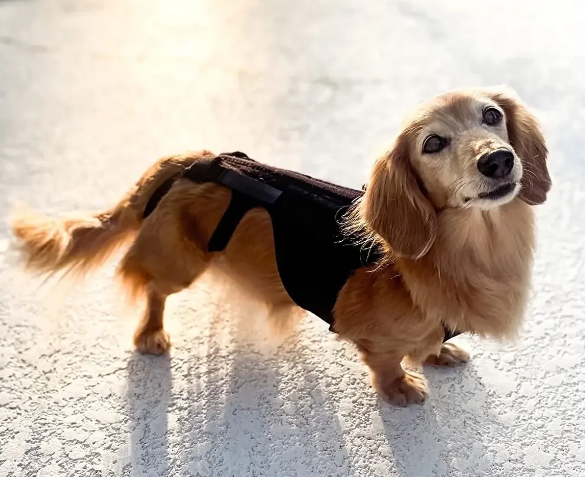
Size of a Piebald Dachshund
Piebald Doxies come in standard and miniature sizes.
1. The Standard Piebald Dachshund: The Classic Wiener Dog
- Weight Watchers: A standard Piebald typically weighs in at a robust 16 to 32 pounds (about 7 to 14.5 kg), which is roughly equivalent to a small microwave or a large Thanksgiving turkey.
- Height Hurdles: Standing at about 8 to 9 inches (20 to 23 cm) tall at the shoulders, they’re just the right height to navigate under your dining table without a hitch.
2. The Miniature Piebald Dachshund: The Compact Canine Companion
- Weight Window: These mini marvels weigh no more than 11 pounds (5 kg), which is comparable to a large bag of flour or perhaps a smallish pumpkin.
- Height Highlights: They stand a mere 5 to 6 inches (13 to 15 cm) tall, making them the perfect size for a cozy lap cuddle.
The Tweenie Territory: The Not-So-Standard Size
Then there’s the ‘tweenie’ – an affectionate term for those Piebald Dachshunds who don’t quite fit the mold of standard or miniature. They’re like the medium coffee size – not too large, not too small, but just perfect for those who can’t decide.
Diet and Nutrition
A balanced diet for Dachshunds is crucial for maintaining their health and energy levels. Since they’re prone to obesity, it’s important to monitor their food intake and avoid overfeeding. We all love spoiling our furry friends with treats, but here’s a fact: those commercial snacks could be turning your pooch into a little chonk! It’s like finding out that eating a whole cake might make you gain weight. And guess what? Just like some of us are more likely to win the lottery than to fit into our high school jeans, genetics also play a sneaky role in your dog’s waistline. That’s right, some dogs are just born to be rounder – it’s in their genes, not in their jeans!
Exercise Needs
Despite being pint-sized, these little sausage dogs need their daily dose of exercise. Why? Because a bored Doxie is a recipe for disaster (imagine a tiny, furry tornado zooming around your house). So, let’s keep those little legs moving with daily walks and playtime.
Since these pooches shouldn’t be allowed to jump on beds or climb the stairs multiple times a day, we recommend you to take a look at the Anti-Slip Dachshund Stairs. They will help your pet to climb onto the bed easily, while the non-slipping surface prevents your pet from falling.
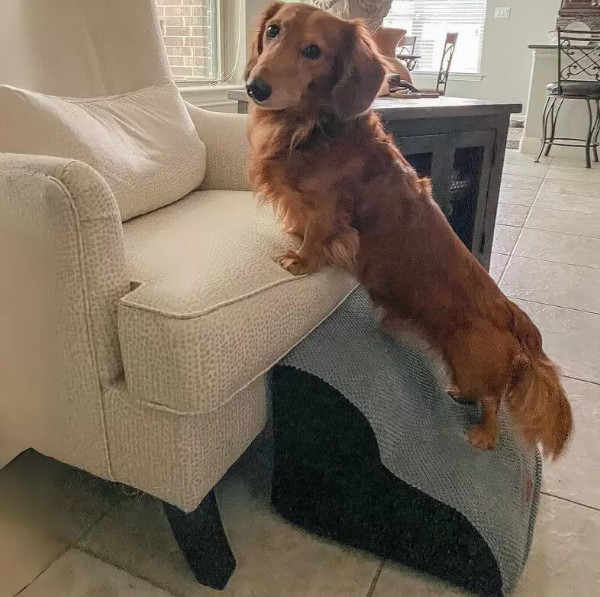
What Are Common Health Issues in Piebald Dachshunds?
Like many other dachshunds, piebald dachshunds have a tendency to develop some medical problems. Here’s a friendly overview of some common health concerns for these adorable pups:
- Intervertebral Disc Disease (IVDD): The piebald Dachshunds are also prone to this problem. They have longer bodies, making their spine vulnerable to conditions like herniated discs, which are more common in dogs with short legs. In some instances, the IVDD leads to pain, nerve damage, and even paralysis. Hence, one must treat their back carefully and abstain from straining their spine through strenuous physical exercise.
- Obesity: Dachshunds love food and are prone to obesity. The back problems become more severe when one has excess weight. This may also precipitate other health problems hence it is necessary to maintain a healthy diet and physical exercise regiment.
- Dental Issues: Piebalds, just like small-breed dogs, also suffer from the health problems associated with their teeth. Dachshund’s teeth require regular dental check-ups and teeth cleaning, either at home or by a vet.
- Eye Problems: Some of these pups might also develop cataract, PRA and other diseases of the eye. Eye problems should be checked out at least every year.
- Deafness: Piebald Dachshunds have a higher instance of deafness. Puppies could possibly have their hearing tested.

Training and Socialization of a Piebald Dachshund
Training Challenges
Training a Piebald Dachshund is like trying to convince a toddler that broccoli is better than candy – it’s challenging but not impossible. Thanks to their “I do what I want” attitude, consistency and positive reinforcement are your best friends. Imagine you’re a doggy diplomat negotiating peace treaties with treats. And let’s not forget about socialization – it’s like sending your dog to charm school. The more they mingle with other dogs and humans, the more they turn into well-behaved fur-gentlemen and ladies.
Breeding and Genetics
Understanding Piebald Genetics
The piebald pattern in Dachshunds is a result of a specific genetic combination. It’s important for breeders to understand these genetics to ensure healthy and ethically bred litters.
Breeding Considerations
Prospective breeders should be aware of the health and genetic implications of breeding Piebald Dachshunds, including potential hereditary health issues.
How rare is a piebald dachshund?
The Piebald Dachshund, with its unique and captivating coat pattern, is a relatively rare gem in the world of Dachshunds. This rarity stems from the specific genetic combination required to produce the piebald pattern. Unlike the more common dapple or solid-colored Dachshunds, the piebald pattern emerges only when both parents carry the recessive piebald gene.
This genetic roulette makes the occurrence of a Piebald Dachshund less frequent and somewhat unpredictable, turning each piebald puppy into a delightful surprise. Moreover, the breeding ethics and standards set by kennel clubs and breed enthusiasts add another layer of rarity. Some breeders are hesitant to specifically breed for the piebald pattern, as it can sometimes be associated with certain health concerns, such as deafness – a trait observed in many other breeds with similar extreme white patterns.
Additionally, the ethics and standards for breeding laid down by kennel clubs and breeders make it even more rare. This demand is driven by the breed’s distinctive aesthetic appeal and the allure of owning a dog that is not just a loyal companion. We can say that it’s also a living, breathing work of art.
The combination of genetic factors, breeding ethics, and market demand intertwines to make the Piebald Dachshund a rare and sought-after variant of the beloved Dachshund breed.
Conclusion
Owning a Piebald Dachshund is a rewarding experience that brings joy and companionship. Their distinctive appearance, coupled with their spirited personality, makes them a beloved breed. Prospective owners should consider all aspects of their care to ensure a happy and healthy life for these delightful dogs.

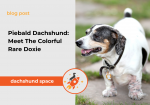
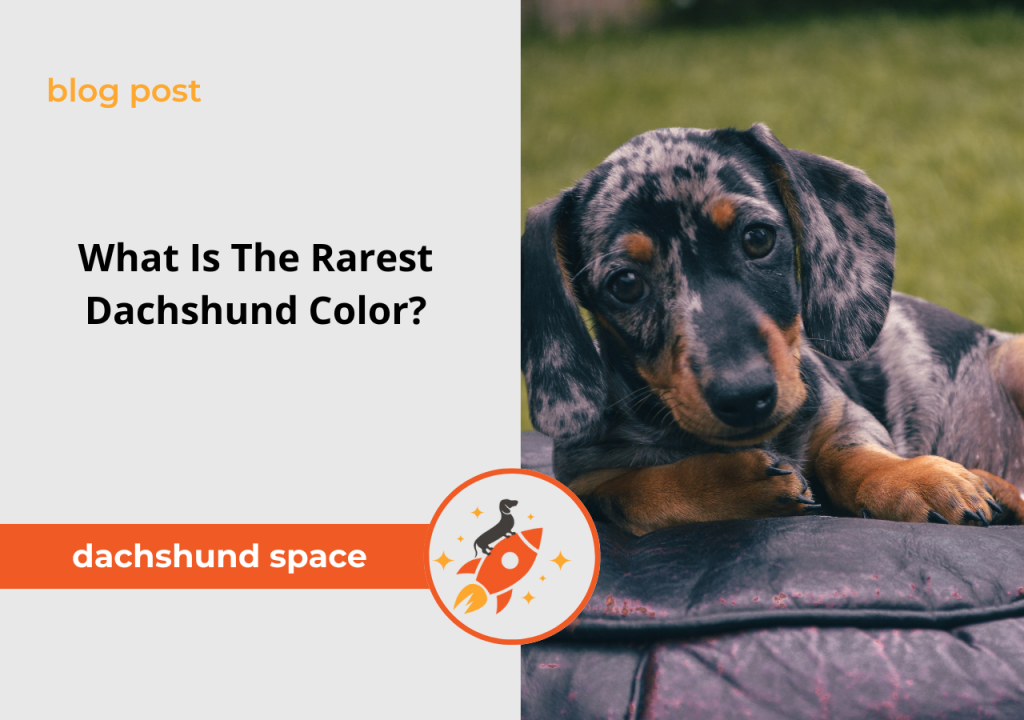

One thought on “Piebald Dachshund: Meet The Colorful Rare Doxie”